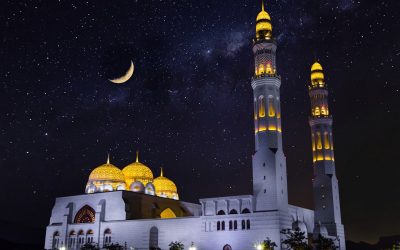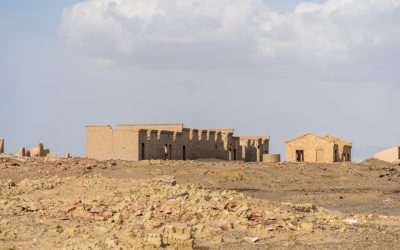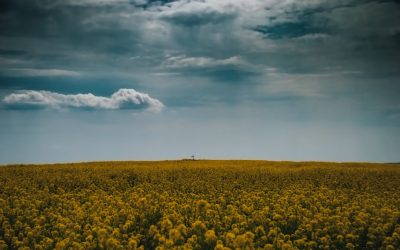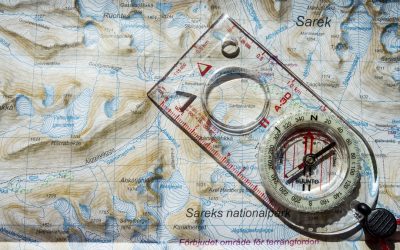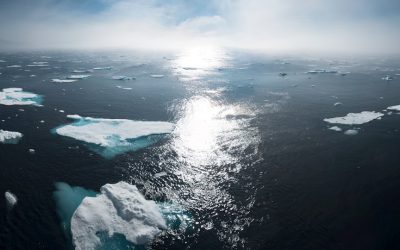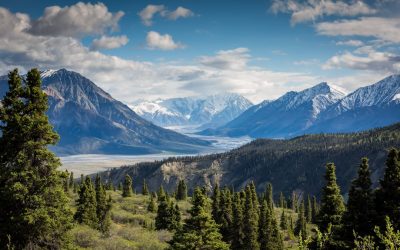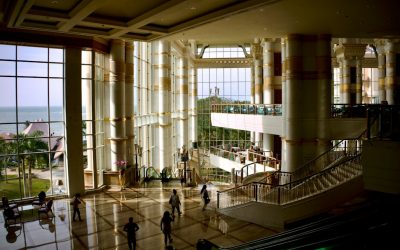World Geography
Geography is the study of the Earth’s landscapes, environments, and the relationships between people and their surroundings. It encompasses both the physical aspects of the Earth, such as its landforms, bodies of water, and climate, as well as the human aspects, including population distribution, cultures, and economies. World geography is a broad field that seeks to understand the complexities of our planet and how humans interact with it. By studying world geography, we can gain a deeper appreciation for the diversity of our planet and the interconnectedness of its various regions.
Geography is a multidisciplinary field that draws on elements of physical science, social science, and humanities. It involves the use of maps, spatial analysis, and geographic information systems (GIS) to understand the Earth’s surface and the processes that shape it. World geography also encompasses the study of human geography, which examines the ways in which people and their activities are distributed across the Earth. By understanding world geography, we can better appreciate the environmental, cultural, and economic challenges facing different regions of the world. This knowledge is crucial for addressing global issues such as climate change, resource management, and international development.
The Five Oceans and Seven Continents
The Earth’s surface is divided into five major oceans: the Pacific, Atlantic, Indian, Southern (or Antarctic), and Arctic Oceans. These vast bodies of water play a crucial role in regulating the Earth’s climate and supporting diverse marine ecosystems. The oceans also serve as important transportation routes and a source of food and other natural resources for human societies around the world.
In addition to the oceans, the Earth’s landmasses are divided into seven continents: Africa, Antarctica, Asia, Europe, North America, Australia (or Oceania), and South America. Each continent has its own unique physical and cultural characteristics, shaped by millions of years of geological processes and human history. From the deserts of Africa to the rainforests of South America, the continents offer a rich tapestry of landscapes and environments for exploration and study.
Major Mountain Ranges and Deserts
The Earth’s surface is also marked by major mountain ranges and deserts that have shaped the planet’s physical and cultural landscapes. The Himalayas, for example, are the highest mountain range in the world and are home to diverse ecosystems and cultures in countries such as India, Nepal, and Bhutan. The Andes in South America, the Rockies in North America, and the Alps in Europe are other prominent mountain ranges that have influenced human settlement patterns and economic activities.
Deserts cover about one-third of the Earth’s land surface and are characterized by low precipitation and extreme temperatures. The Sahara Desert in Africa is the largest hot desert in the world, while the Gobi Desert in Asia is one of the largest cold deserts. Deserts are not only home to unique flora and fauna but have also been important trade routes and cultural crossroads throughout history.
Climate Zones and Biomes
The Earth’s climate is influenced by a variety of factors, including latitude, altitude, ocean currents, and prevailing winds. As a result, the planet is divided into different climate zones, each with its own characteristic weather patterns and ecosystems. The equator, for example, experiences a tropical climate with high temperatures and heavy rainfall, while the polar regions have a cold and dry climate.
These climate zones give rise to different biomes, or large ecological areas characterized by distinct plant and animal communities. The tropical rainforest biome, found near the equator, is home to a diverse array of species and is vital for regulating the Earth’s climate. The grasslands biome, found in regions such as the African savannah and North American prairies, supports grazing animals and has been important for human agriculture throughout history.
Human Geography and Population Distribution
Human geography examines the ways in which people and their activities are distributed across the Earth’s surface. It encompasses topics such as population growth, migration patterns, urbanization, and cultural diversity. Understanding human geography is crucial for addressing global challenges such as poverty, inequality, and environmental degradation.
Population distribution is uneven across the world, with some regions experiencing rapid population growth while others are declining. The majority of the world’s population lives in Asia, particularly in countries such as China and India. Urban areas are also growing rapidly, with more than half of the world’s population now living in cities. This trend has significant implications for infrastructure development, resource management, and social inequality.
Historical and Cultural Geography
Historical geography examines how human activities have shaped the Earth’s landscapes over time. It explores topics such as colonialism, trade routes, and the rise and fall of empires. Cultural geography focuses on how human cultures have developed in different regions of the world and how they interact with their environments.
The Silk Road, for example, was an ancient trade route that connected China with Europe and facilitated the exchange of goods, ideas, and technologies across Eurasia. This historical trade route had a profound impact on the development of cultures and economies along its path. Similarly, cultural geographers study how different societies have adapted to their environments through practices such as agriculture, architecture, and religious beliefs.
The Importance of Geographic Knowledge
Geographic knowledge is crucial for addressing global challenges such as climate change, resource management, and international development. By understanding world geography, we can better appreciate the environmental, cultural, and economic challenges facing different regions of the world. This knowledge is crucial for addressing global issues such as climate change, resource management, and international development.
Geographic knowledge also helps us to understand our interconnectedness with other regions of the world. By studying world geography, we can gain a deeper appreciation for the diversity of our planet and the interconnectedness of its various regions. This understanding can foster a sense of global citizenship and empathy for people from different cultures and backgrounds.
In conclusion, world geography is a complex and multifaceted field that encompasses both physical and human aspects of the Earth’s landscapes. By studying world geography, we can gain a deeper appreciation for the diversity of our planet and the interconnectedness of its various regions. This knowledge is crucial for addressing global challenges such as climate change, resource management, and international development. It also helps us to understand our interconnectedness with other regions of the world and fosters a sense of global citizenship.
FAQs
What is world geography?
World geography is the study of the Earth’s landscapes, environments, and the relationships between people and their environments. It encompasses the physical features of the Earth, as well as the human activity that takes place on it.
Why is world geography important?
World geography is important because it helps us understand the world around us. It provides insights into the physical and human processes that shape our planet, and helps us make informed decisions about how to interact with our environment.
What are the main branches of world geography?
The main branches of world geography include physical geography, which focuses on the Earth’s natural features and processes, and human geography, which examines the relationships between people and their environments.
How does world geography impact our daily lives?
World geography impacts our daily lives in numerous ways, from influencing the weather and climate we experience, to shaping the availability of natural resources and influencing the distribution of populations and cultures around the world.
What are some key concepts in world geography?
Key concepts in world geography include location, place, human-environment interaction, movement, and region. These concepts help geographers understand and interpret the world around them.
Climate Zones of Bulgaria: Different climate regions Of Bulgaria
Bulgaria, located in Southeast Europe, is a country known for its diverse geography and climate. It is bordered by Romania to the north, Serbia and North Macedonia to the west, Greece and Turkey to the south, and the Black Sea to the east. This unique location gives Bulgaria a variety of climate zones, ranging from continental to Mediterranean, alpine, transitional, and coastal. Understanding these climate zones is crucial for various industries and individuals, as it affects agriculture, tourism, and daily life in different regions of the country. Summary Bulgaria has five main climate zones: Continental, Mediterranean, Alpine, Transitional, and Coastal. The Continental region has cold winters and hot summers, with low precipitation. The Mediterranean region has mild winters and hot summers, with moderate precipitation. The Alpine region has cold winters and cool summers, with high precipitation. The Transitional region has a mix of Continental and Mediterranean climates, with moderate precipitation. The Continental Climate Region of Bulgaria The continental climate region of Bulgaria is characterized by cold winters and hot summers. The average temperature in winter ranges from -1°C to -6°C (30°F to 21°F), while in summer it can reach up to 25°C to 30°C (77°F to 86°F). This region experiences distinct seasons, with spring and autumn being relatively short. Cities such as Sofia, Plovdiv, and Veliko Tarnovo are located in the continental climate region of Bulgaria. These cities experience cold winters with occasional snowfall and hot summers with temperatures often exceeding 30°C (86°F). The continental climate region is also known for its temperature extremes, with temperatures dropping below freezing in winter and reaching over 40°C (104°F) in summer. One...
Political Boundaries of Bulgaria: Provinces, Districts, or Historical Boundaries.
Bulgaria, located in Southeast Europe, is a country with rich history and diverse culture. Like any other country, Bulgaria has political boundaries that define its territories and administrative divisions. These boundaries play a significant role in shaping the country’s governance, culture, and society. In this article, we will explore the different types of political boundaries in Bulgaria, including provinces, districts, and historical boundaries. We will also discuss the impact of these boundaries on Bulgaria’s culture, economy, foreign relations, and its relationship with the European Union. Summary Bulgaria is divided into 28 provinces, each with its own governor and administrative center. The province system in Bulgaria is responsible for implementing national policies and managing local affairs. Bulgaria’s 265 districts are responsible for providing public services and maintaining infrastructure within their boundaries. Bulgaria’s historical boundaries have shifted over time due to wars, treaties, and political changes. Bulgaria’s political boundaries have a significant impact on its culture, economy, and foreign relations. Overview of Bulgaria’s Political Boundaries: Provinces, Districts, and Historical Boundaries Bulgaria is divided into 28 provinces, which are further divided into 265 municipalities. The provinces serve as administrative divisions and are responsible for implementing national policies and programs at the regional level. Each province has its own governor who is appointed by the central government. The provinces play a crucial role in ensuring effective governance and service delivery to the citizens. In addition to provinces, Bulgaria is also divided into districts. There are 28 districts in total, each corresponding to a province. The districts are responsible for overseeing the implementation of national policies and programs at the local level. They work...
Cultural or Historical Sites of Bulgaria: Important Cultural Landmarks or Historical Sites In Bulgaria
Bulgaria is a country with a rich cultural and historical heritage that spans thousands of years. From ancient Roman ruins to medieval fortresses, Bulgaria is home to numerous cultural sites that offer a glimpse into its fascinating past. Exploring these sites not only allows visitors to appreciate the country’s history and culture, but also provides an opportunity to immerse oneself in the beauty and grandeur of Bulgarian architecture, art, and folklore. Summary The Rila Monastery is a must-visit cultural site in Bulgaria. Plovdiv’s ancient Roman ruins are worth exploring. The Alexander Nevsky Cathedral is a symbol of Bulgarian history and culture. The Thracian Tomb of Kazanlak is a UNESCO World Heritage Site. The Etar Architectural-Ethnographic Complex showcases Bulgaria’s rich folklore. The Magnificent Rila Monastery: A Must-Visit Cultural Site in Bulgaria One of the most iconic cultural sites in Bulgaria is the Rila Monastery. Located in the Rila Mountains, this monastery is not only a spiritual center for Bulgarian Orthodox Christians, but also a UNESCO World Heritage Site. Founded in the 10th century by Saint Ivan of Rila, the monastery has played a significant role in preserving Bulgarian culture and spirituality throughout the centuries. The Rila Monastery is renowned for its stunning architecture and intricate artwork. The main church, known as the Nativity of the Virgin, features beautiful frescoes that depict scenes from the Bible and the lives of saints. The monastery also houses a museum that displays a collection of religious artifacts, including icons, manuscripts, and woodcarvings. When visiting the Rila Monastery, it is important to dress modestly and respectfully. Visitors should also be prepared for crowds, especially during...
Natural Resources of Bulgaria: Geography of Natural Resources in Bulgaria
Natural Resources of Bulgaria: Geography of Natural Resources in Bulgaria Discover how the geography and natural resources of Bulgaria shape its economy and global standing.Bulgaria, located in southeastern Europe, is a country rich in diverse geography and abundant natural resources. From the mineral-laden Balkan Mountains to fertile plains and the resource-rich Black Sea coast, Bulgaria’s natural wealth plays a crucial role in shaping its agriculture, energy sector, and mining industry. This article explores the natural resources of Bulgaria, shedding light on their economic and environmental significance and revealing why this lesser-known European nation deserves more world attention. Article Outline 1. Where is Bulgaria, and Why Is Its Geography So Important? 2. What Are Bulgaria’s Major Natural Resources? 3. How Rich Are Bulgaria’s Mineral Resources? 4. Does Bulgaria Have Oil and Natural Gas Reserves? 5. How Does Coal Factor into Bulgaria’s Energy Sector? 6. What Is the Role of Agriculture in Bulgaria’s Economy? 7. How Does the Black Sea Influence Bulgaria’s Economy and Resources? 8. What Role Do Forests and National Parks Play in Bulgaria’s Environment? 9. How Does the Geography Affect Bulgaria’s Biodiversity and Ecosystem? 10. What Challenges and Opportunities Does Bulgaria Face Regarding Its Natural Resources? 1. Where is Bulgaria, and Why Is Its Geography So Important? Bulgaria is located in southeastern Europe, bordered by Romania to the north, the Black Sea to the east, and mountainous terrain to the south and west. Its diverse geography includes the Balkan Mountains, Rhodope Mountains, and the Rila Mountains, which dominate southern Bulgaria, while the Danube Plain stretches across northern Bulgaria. This diverse terrain impacts everything from agriculture to mining....
Cultural or Historical Sites of Brunei: Important Cultural Landmarks or Historical Sites In Brunei
Introduction Brunei, a small Southeast Asian nation on the island of Borneo, is known for its rich history and vibrant culture. With a history dating back to the 7th century, Brunei has a wealth of heritage that deserves to be preserved and showcased. From its royal regalia to its Islamic identity, Brunei’s cultural landmarks are a testament to its past and a source of pride for its people. In this article, we will explore some of the most significant cultural landmarks in Brunei and discuss the importance of preserving and showcasing them. The Royal Regalia Museum: A Showcase of Brunei’s Rich Heritage The Royal Regalia Museum in Brunei is a testament to the country’s rich royal heritage. Established in 1992, the museum houses a collection of royal regalia, including the crown jewels, ceremonial attire, and gifts received by the Sultan of Brunei. The museum provides visitors with a glimpse into the opulent world of Brunei’s monarchy and showcases the country’s cultural traditions. One of the highlights of the museum is the Sultan’s throne room, where visitors can see the intricately designed golden throne used during official ceremonies. The museum also features exhibits on Brunei’s history, including displays on the country’s oil industry and its role in international diplomacy. The Royal Regalia Museum plays an important role in preserving Brunei’s royal heritage. By showcasing the regalia and artifacts associated with the monarchy, the museum helps to educate both locals and tourists about Brunei’s rich history and cultural traditions. It also serves as a source of national pride for Bruneians, reminding them of their country’s royal legacy. The Omar Ali Saifuddien...
Natural Resources of Brunei: Where Natural Resources are located In Brunei Darussalam
Natural Resources of Brunei Darussalam: Fueling the Economy of Brunei Brunei, officially known as the Nation of Brunei, the Abode of Peace, is a small country located on the island of Borneo in Southeast Asia. It is bordered by Malaysia and the South China Sea. Despite its small size, Brunei is blessed with abundant natural resources that have played a significant role in shaping its economy and development. Brunei Darussalam is a small but wealthy country on the island of Borneo, best known for its abundant natural resources, especially oil and gas. Despite its modest size, Brunei wields considerable economic power thanks to its vast reserves of petroleum and natural gas. In this article, we explore the full spectrum of the resources of Brunei, diving deep into its energy dominance, rich biodiversity, and emerging opportunities for sustainable development. Whether you’re curious about Brunei’s natural gas, its GDP, or its future prospects beyond fossil fuels, this comprehensive guide is packed with valuable insights. Summary Brunei has a variety of natural resources including oil and gas, forests, minerals, fisheries, agriculture, water, and renewable energy. Oil and gas reserves are the most significant natural resource in Brunei, accounting for the majority of the country’s GDP and exports. Brunei’s forests are also important, covering over 70% of the country’s land area and providing valuable ecosystem services. Mineral resources in Brunei are limited, but include deposits of gold, copper, and other metals. Fisheries and aquatic resources are important for both subsistence and commercial purposes, with a variety of fish and shellfish species found in Brunei’s waters. Oil and Gas Reserves in Brunei One of the...
Natural Resources of Brunei: Where Natural Resources are located In Brunei
Brunei, officially known as the Nation of Brunei, the Abode of Peace, is a small country located on the island of Borneo in Southeast Asia. It is bordered by Malaysia and the South China Sea. Despite its small size, Brunei is blessed with abundant natural resources that have played a significant role in shaping its economy and development. Summary Brunei has a variety of natural resources including oil and gas, timber and forest, mining and minerals, agriculture, fisheries and aquatic, biodiversity and wildlife, renewable energy, and land and water resources. Brunei’s oil and gas reserves are the main source of revenue for the country and have been exploited since the 1920s. Timber and forest resources in Brunei are managed sustainably, with strict regulations in place to protect the environment and biodiversity. Brunei has significant mineral resources, including gold, copper, and iron, but mining activities are limited due to environmental concerns. Agriculture is an important sector in Brunei, with rice, fruits, and vegetables being the main crops grown. The country also has a thriving aquaculture industry. Oil and Gas Reserves in Brunei One of the most significant natural resources in Brunei is its vast reserves of oil and gas. Brunei has been producing oil since 1929 and is currently the ninth-largest producer of oil in Southeast Asia. The country’s oil reserves are estimated to be around 1.1 billion barrels, making it one of the wealthiest nations in the world per capita. The importance of oil and gas to Brunei’s economy cannot be overstated. Oil and gas exports account for more than 90% of Brunei’s total exports and contribute significantly to...
Political Boundaries of Brunei: Provinces, Districts, or Historical Boundaries.
Brunei, officially known as the Nation of Brunei, the Abode of Peace, is a small sovereign state located on the island of Borneo in Southeast Asia. It is bordered by the South China Sea to the north and shares land borders with Malaysia. Brunei has a unique political system, with an absolute monarchy and a Sultan as its head of state. The country is divided into several administrative divisions, including provinces and districts, which play a crucial role in its governance. Summary Brunei’s political boundaries have evolved over time, with historical, administrative, provincial, and district divisions. Districts play a crucial role in Brunei’s governance, with each district having its own district office and officer. Provincial boundaries are significant in Brunei, as they determine the allocation of resources and development projects. Colonialism has had a lasting impact on Brunei’s political boundaries, with the country being divided into British protectorates in the 19th century. Understanding Brunei’s political boundaries is important for navigating the country’s governance and history. Historical Boundaries of Brunei Brunei has a rich history that dates back centuries. In the past, Brunei’s territory extended beyond its current borders and included parts of present-day Malaysia and the Philippines. However, over time, Brunei lost much of its territory due to territorial disputes with neighbouring countries. One of the most significant territorial disputes involving Brunei is the dispute with Malaysia over the ownership of the island of Borneo. Both countries claim sovereignty over certain parts of the island, leading to tensions and occasional conflicts. The dispute remains unresolved to this day. Administrative Divisions of Brunei Brunei is divided into four administrative divisions:...
Climate Zones of Brunei: Different climate regions Of Brunei
Brunei, a small country located on the island of Borneo in Southeast Asia, is known for its rich biodiversity and diverse climate zones. The country’s geography is characterized by dense rainforests, mountain ranges, and coastal areas. Brunei experiences a tropical climate with high humidity and temperatures throughout the year. Understanding Brunei’s climate zones is crucial for various reasons, including conservation efforts, tourism planning, and mitigating the effects of climate change. Summary Brunei has a diverse range of climate zones, including tropical rainforest, tropical monsoon, equatorial, subtropical highland, semi-arid, arid, Mediterranean, and polar. The tropical rainforest climate zone in Brunei is characterized by high temperatures, high humidity, and heavy rainfall throughout the year. The tropical monsoon climate zone in Brunei experiences distinct wet and dry seasons, with heavy rainfall during the wet season and lower temperatures during the dry season. The equatorial climate zone in Brunei has high temperatures and rainfall throughout the year, with no distinct dry season. The subtropical highland climate zone in Brunei has cooler temperatures and lower humidity, with distinct seasons and occasional frost. Climate change is affecting Brunei’s climate zones, with rising temperatures and changing rainfall patterns posing a threat to the country’s ecosystems and economy. The Tropical Rainforest Climate Zone in Brunei One of the prominent climate zones in Brunei is the tropical rainforest climate zone. This zone is characterized by high temperatures, heavy rainfall, and high humidity throughout the year. The average annual rainfall in this zone can exceed 3,000 millimeters. The rainforests in this climate zone are home to a wide variety of flora and fauna. Some examples of flora found in...
Terrain and Topography of Brunei: mountains, valleys, and plains.
Brunei, a small sovereign state located on the island of Borneo in Southeast Asia, is known for its diverse and unique terrain and topography. The country is characterized by its mountain ranges, valleys, plains, rivers, waterways, and coastal areas. Understanding the geography of Brunei is crucial for various reasons, including environmental conservation, sustainable development, and disaster management. Summary Brunei’s terrain and topography are diverse and varied, with mountain ranges, valleys, plains, coastal areas, and waterways. The mountain ranges of Brunei are home to unique flora and fauna, and offer opportunities for hiking and exploration. The valleys of Brunei are characterized by their lush vegetation and winding rivers, and are important for agriculture and biodiversity. The plains of Brunei are home to important ecosystems, including mangroves and peat swamps, and are vulnerable to climate change and human activity. Climate plays a significant role in shaping Brunei’s terrain and topography, with heavy rainfall and tropical storms affecting the landscape. The Mountain Ranges of Brunei: A Closer Look Brunei is home to several mountain ranges, including the Bukit Pagon Range, the Temburong Range, and the Belait Range. These mountain ranges are characterized by their steep slopes, dense forests, and rich biodiversity. The highest peak in Brunei is Bukit Pagon, which stands at an impressive 1,850 meters above sea level. The mountain ranges of Brunei play a vital role in the country’s ecosystem. They act as a natural barrier, protecting the inland areas from strong winds and storms. The dense forests on the slopes of these mountains are home to a wide variety of plant and animal species, many of which are endemic...
History of Brunei
Brunei, officially known as the Nation of Brunei, the Abode of Peace, is a small country located on the island of Borneo in Southeast Asia. Despite its small size, Brunei has a rich and fascinating history that spans over centuries. Understanding Brunei’s history is important as it provides insights into the country’s cultural heritage, political system, and economic development. This article aims to provide a comprehensive overview of Brunei’s history, from its early settlements to its present-day status as an oil-rich nation. Summary Brunei’s early history dates back to the 7th century and lasted until the 15th century. Islam arrived in Brunei during the 15th century and lasted until the 17th century. Brunei’s golden age occurred during the 16th century and lasted until the 18th century. European powers arrived in Brunei during the 16th century and lasted until the 19th century. British influence in Brunei occurred during the 19th century and lasted until the early 20th century. Brunei’s Early History: From the 7th Century to the 15th Century Brunei’s early history can be traced back to the 7th century when it was inhabited by indigenous tribes. These early settlements were influenced by Hinduism and Buddhism, which were brought to the region through trade with India and other Southeast Asian countries. The influence of these religions can still be seen in Brunei’s architecture and cultural practices. During this period, Brunei also engaged in trade with China and other Southeast Asian countries. The strategic location of Brunei on the maritime trade routes made it an important trading hub. The people of Brunei traded goods such as spices, gold, and ceramics, which...
Population Density of Brunei
Brunei, officially known as the Nation of Brunei, the Abode of Peace, is a small sovereign state located on the island of Borneo in Southeast Asia. It is bordered by Malaysia and the South China Sea. With a total land area of approximately 5,765 square kilometers, Brunei is one of the smallest countries in the world. Despite its small size, Brunei has a relatively large population compared to its land area. Population density refers to the number of people living in a specific area, usually measured per square kilometer. It is an important indicator of how crowded or sparsely populated an area is. Understanding population density is crucial for policymakers and urban planners as it helps them make informed decisions about resource allocation, infrastructure development, and social services provision. Summary Brunei has a small population of approximately 460,000 people. Population density is the number of people living in a specific area, usually measured in square kilometres. Urban areas in Brunei have a higher population density than rural areas. Factors affecting population density in Brunei include economic opportunities, infrastructure, and government policies. Managing population density is crucial for sustainable development in Brunei. Understanding Population Density and its Importance Population density is calculated by dividing the total population of an area by its land area. It provides valuable insights into how people are distributed across a given territory. High population density indicates that there are many people living in a small area, while low population density suggests that there are fewer people spread out over a larger area. Population density plays a significant role in various aspects of life. It affects...




